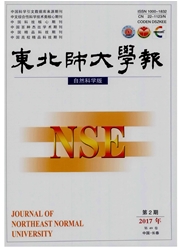

 中文摘要:
中文摘要:
对吉林、辽宁两地23例满族个体的线粒体高可变Ⅰ区序列进行了测定,并采用APLP分析和编码区SNP分析将这些样本归属于单倍群A,B,C,D,D4,F,M,M8a和R,结合已经发表的东北地区其他人群的母系遗传数据,对蒙古族、朝鲜族、鄂温克族、鄂伦春族、达斡尔族以及汉族人群的线粒体遗传数据进行了主成分、分子差异、中介网络分析.结果表明:同一起源地区的民族之间有较近的遗传关系,同时居住在相同或相邻地区的民族之间同样表现出较近的遗传关系,表明东北各民族向外扩张时与当地居民发生了基因融合.
 英文摘要:
英文摘要:
As a new type of ecological wastewater treatment technology,constructed wetland has been developed at a great speed in its application.Constructed wetland due to its unique advantages,including high removal efficiency,low cost and easy to manage and so on.It attracts lots of people in the environmental pollution and control,and to be widely used.This paper mainly describes the concepts,character,classification,principle and focused on the research advances in utilizing constructed wetland technology to treat the wastewater,discuss the research of it to deepen the research and application of constructed wetland.
 同期刊论文项目
同期刊论文项目
 同项目期刊论文
同项目期刊论文
 期刊信息
期刊信息
